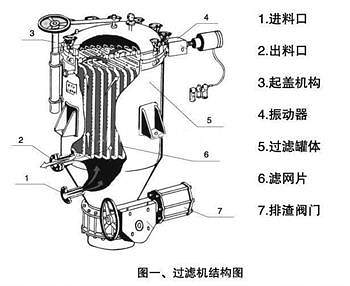Tel: +86 21 5109 7921,+86 21 5109 0930
Self-cleaning filters treat industrial wastewater with the following treatment principles
2021-05-08
The treatment principles of self-cleaning filters for industrial wastewater are as follows.
1.Prioritize the use of non-toxic production technology to replace or transform backward production technology, and eliminate or reduce the generation of toxic and harmful wastewater in the production process as much as possible.
2. When using toxic raw materials and producing toxic intermediate products, strict operation and supervision should be carried out to prevent dripping and reduce losses, and reasonable processes and equipment should be used as far as possible.
3. Wastewater containing highly toxic substances, such as those containing certain heavy metals, radioactive substances, high concentrations of phenol and cyanide, should be diverted from other wastewater in order to facilitate the treatment and recovery of useful substances.
4, the flow of large, light pollution of wastewater should be properly treated and recycled, shall not be discharged into the sewer, so as not to increase the city sewage and municipal sewage treatment load.
5. Organic wastewater similar to municipal wastewater, such as food processing wastewater, sugar wastewater and paper wastewater, can be discharged into the municipal wastewater system for treatment.

6. Some biodegradable toxic wastewater, such as phenol and cyanide wastewater, should be treated first and then discharged into municipal sewers according to agreed discharge standards, followed by biochemical treatment.
7. Toxic wastewater containing difficult to biodegrade should be treated separately and should not be discharged into municipal sewers. The development trend of industrial wastewater treatment is to recycle wastewater and pollutants as useful resources or to realize closed-loop cycle.
Phenol-containing wastewater comes mainly from industrial sectors such as coke plants, gas plants, petrochemical plants, insulation plants and petroleum cracking processes for the production of ethylene, synthetic phenols, polyamide fibers, synthetic dyes, organic pesticides and phenolic resins. Phenol-containing wastewater contains mainly phenol-based compounds such as phenol, cresol, xylenol and nitrocresol. Phenolic compounds are protoplasmic toxicants that cause protein coagulation. When the mass concentration of phenol in water reaches 0.1 to 0.2 mg / L, the fish has a bad taste and is not edible. Increasing the mass concentration to 1 mg / L affects fish spawning, which contains 5-10 mg / L of phenol, and fish die a lot. Phenol in drinking water can affect human health. Even if the mass concentration of phenol in water is only 0.002 mg / L, disinfection with chlorine will produce the odor of chlorophenol. Phenol-containing wastewater with a mass concentration of 1000 mg/L is usually used. It is called high concentration phenol wastewater. This wastewater must be recovered after treatment of phenol. Phenol-containing wastewater with a mass concentration of less than 1000 mg/L is called low concentration phenol wastewater. This wastewater is usually recirculated and the phenol is concentrated and recovered for post-treatment. Methods for recovering phenol include solvent extraction, steam vapor extraction, adsorption and closed loop. Phenol wastewater with mass concentrations below 300 mg/L can be treated by biological oxidation, chemical oxidation, and physicochemical oxidation and then discharged or recycled.



